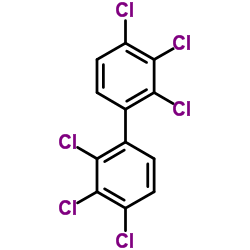Parallelism and dissociation in the actions of an Aroclor 1260-based transformer fluid on testicular androgenesis and antioxidant enzymes.
Nebojsa L Andric, Silvana A Andric, Sonja N Zoric, Tatjana S Kostic, Stanko S Stojilkovic, Radmila Z Kovacevic
文献索引:Toxicology 194(1-2) , 65-75, (2003)
全文:HTML全文
摘要
The mechanism by which Aroclors and other polychlorinated biphenyls (PCBs) inhibit testicular androgenesis in vivo and in vitro has not been characterized. Here we studied in adult rats the effects of intratesticular (i.t.t.), intraperitoneal (i.p.) and by gavage (p.o.) administration of Pyralene, an Aroclor 1260-based transformer fluid, on testicular androgenesis and oxidative status in androgen-producing interstitial cells and liver. Pyralene markedly decreased in vitro agonist stimulated androgenesis 24 h after bilateral i.t.t.-injection (25 microg/testis), 24 h and 96 h after single i.p.-injection (10 and 50 mg/kg body weight), and 96 h after p.o.-administration (7x10 mg and 7x50 mg/kg body weight daily). Inhibited androgenesis was accompanied by changes in the activity of antioxidant enzymes (AOEs) in interstitial cells after local i.t.t.-treatment and occasionally after systemic Pyralene application. Among changes in the activity, glutathione peroxidase and catalase reflected relatively well the toxicity of Pyralene in these cells. In liver, glutathione-S-transferase (GST) and glutathione peroxidase activities were enhanced after p.o.-treatment and total glutathione (tGSH) content and lipid peroxidation (LP) were enhanced after i.p.-administration. These results indicate that Pyralene inhibits androgenesis independently of the method of its administration. The results also suggest that changes in the oxidative status in testicular milieu are not critical for Pyralene-induced inhibition of androgenesis.
相关化合物
| 结构式 | 名称/CAS号 | 分子式 | 全部文献 |
|---|---|---|---|
 |
多氯联苯(Aroclor 1260)标准溶液
CAS:11096-82-5 |
C12H4Cl6 |
|
Extensive biodegradation of polychlorinated biphenyls in Aro...
2008-01-01 [Chemosphere 73(1) , 126-32, (2008)] |
|
Use of a polar ionic liquid as second column for the compreh...
2010-09-10 [J. Chromatogr. A. 1217(37) , 5859-67, (2010)] |
|
Transcriptome-wide gene expression in a rat model of attenti...
2011-12-01 [Am. J. Med. Genet. B. Neuropsychiatr. Genet. 156B(8) , 898-912, (2011)] |
|
Dermal absorption in rhesus monkeys of polychlorinated biphe...
2002-06-01 [Regul Toxicol Pharmacol 35(3) , 289-95, (2002)] |
|
Polychlorinated biphenyl exposure causes gonadal atrophy and...
2007-04-01 [Toxicol. Pathol. 35(3) , 356-65, (2007)] |